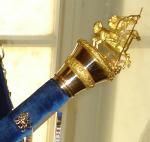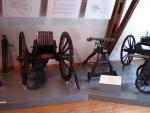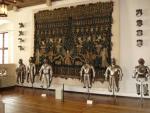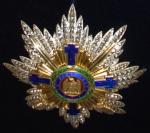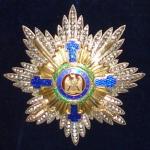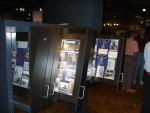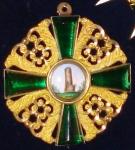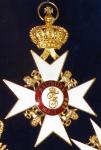-
Posts
4,908 -
Joined
-
Last visited
-
Days Won
97
Content Type
Profiles
Forums
Blogs
Gallery
Events
Store
Everything posted by Dave Danner
-
There was more than one decree called a "Prinzenerlass". The decree in 1940 was prompted by Prince Wilhelm von Preussen's death in the French campaign and the publicity of his funeral. The Nazis were afraid that royalist sentiment might be rekindled. But that decree only removed princes from frontline service. Many continued to serve in the rear. The 1943 decree was prompted, at least in part, by Italy's defection from the Axis. The Nazis viewed the Italian king as having betrayed Mussolini, and denounced their own princes as placing their international family connections ahead of their loyalty to Germany (King Victor Emmanuel III's daughter Mafalda, who died in Buchenwald in 1944, was married to Prince Philipp of Hesse-Kassel). The decree was called the Decree Against Internationally-Connected Persons. The July 20th plot was pretty much the last straw, but the anti-prince rhetoric among the Nazis had been going strong before then. Many princes had continued to serve away from the frontlines after 1940, and some even found themselves there. For example, Ernst August Prinz von Hannover, a staff officer, was wounded at Kharkov in 1943. Dietmar Hubertus Prinz von Sachsen-Coburg und Gotha was killed in action in Russia in 1943. Georg-Wilhelm Prinz zu Schaumburg-Lippe was killed in action in 1945. A bunch of mediatized princes also fought and many were killed in action.
-
The only person I have seen with three MVOs with swords is Franz Ritter von Epp. He wore his 3rd Class with Crown and Swords awarded in 1914 for World War I, his 3rd Class with Swords (formerly Knight 1st Class) awarded in 1906 for Southwest Africa, and his 4th Class with Swords (formerly Knight 2nd Class) awarded in 1901 for China. Presumably, he interpreted the provisions of Article XI of the Statutes of the MVO - "Kriegs- und Friedensdekorationen werden nebeneinander, auch in verschiedenen Klassen, getragen." - to mean that war decorations from different wars could be worn together, and not just a peacetime non-swords award with a swords award. And probably no one was going to tell him he was wrong. In the higher grades, there was a provision for wearing multiple awards, but this wouldn't apply to a ribbon bar. A recipient of the Officer's Cross continued to wear his 3rd or 4th Class on the medal bar. If he received the 2nd Class, the 3rd or 4th Class was removed, but he continued to wear the Officer's Cross. If he received the Star to the 2nd Class, then he turned in the Officer's Cross.
-
Streibich's was one of 23 awarded to Reserve-Infanterie-Regiment Nr. 238, along with 2 MKFVOs to its officers. RIR 238 ranked 18th among units in the total number of Silver Karl Friedrich Military Merit Medals received. GR 110 ranked first, with 56 Karl Friedrich Military Merit Medals. Ten regiments had 45 or more awards, 17 regiments had between 10 and 44 awards, and 17 regiments/battalions had between 4 and 9 awards. Other units had 3 or fewer.
-
They are on display at the Veste Coburg, the castle above Coburg, the former capital of the duchy. I can crop a close-up from the full pictures I took, though some are better than others. Too large and they are too fuzzy. Here is the Order of the Star of Romania, Grand Cross badge with swords on ring, from Duke Alfred's decorations:




